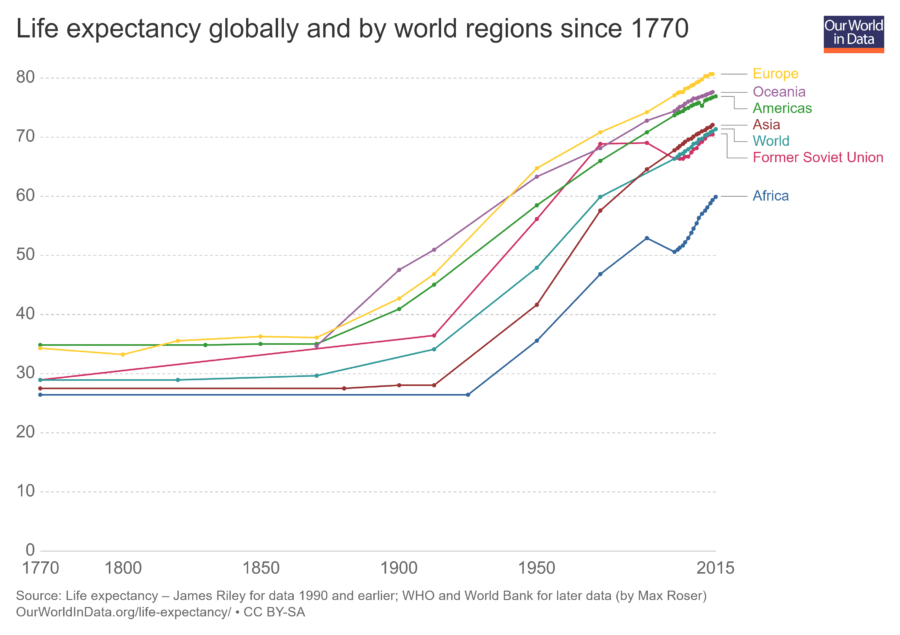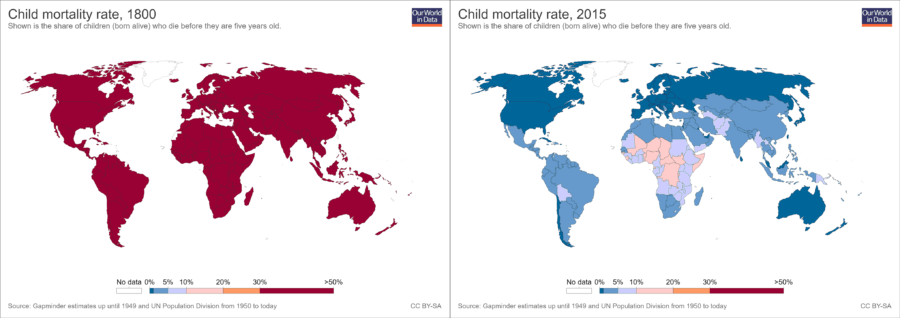
#434528 To Extend Our Longevity, First We Must ...Healthcare today is reactive, retrospective, bureaucratic, and expensive. It’s sick care, not healthcare. But that is radically changing at an exponential rate. Through this multi-part blog series on longevity, I’ll take a deep dive into aging, longevity, and healthcare technologies that are working together to dramatically extend the human lifespan, disrupting the $3 trillion healthcare system in the process. I’ll begin the series by explaining the nine hallmarks of aging, as explained in this journal article. Next, I’ll break down the emerging technologies and initiatives working to combat these nine hallmarks. Finally, I’ll explore the transformative implications of dramatically extending the human health span. In this blog I’ll cover:
Let’s dive in. The System is Broken—Here’s the Data:
And Yet, We Live in the Healthiest Time in Human HistoryConsider these insights, which I adapted from Max Roser’s excellent database Our World in Data:
  The 9 Mechanisms of Aging*This section was adapted from CB INSIGHTS: The Future Of Aging. Longevity, healthcare, and aging are intimately linked. With better healthcare, we can better treat some of the leading causes of death, impacting how long we live. By investigating how to treat diseases, we’ll inevitably better understand what causes these diseases in the first place, which directly correlates to why we age. Following are the nine hallmarks of aging. I’ll share examples of health and longevity technologies addressing each of these later in this blog series.
ConclusionOver the past 200 years, we have seen an abundance of healthcare technologies enable a massive lifespan boom. Now, exponential technologies like artificial intelligence, 3D printing and sensors, as well as tremendous advancements in genomics, stem cell research, chemistry, and many other fields, are beginning to tackle the fundamental issues of why we age. In the next blog in this series, we will dive into how genome sequencing and editing, along with new classes of drugs, are augmenting our biology to further extend our healthy lives. What will you be able to achieve with an extra 30 to 50 healthy years (or longer) in your lifespan? Personally, I’m excited for a near-infinite lifespan to take on moonshots. Join MeAbundance-Digital Online Community: I’ve created a Digital/Online community of bold, abundance-minded entrepreneurs called Abundance-Digital. Abundance-Digital is my ‘onramp’ for exponential entrepreneurs – those who want to get involved and play at a higher level. Click here to learn more. Image Credit: David Carbo / Shutterstock.com
This entry was posted in Human Robots. Bookmark the permalink.
|
